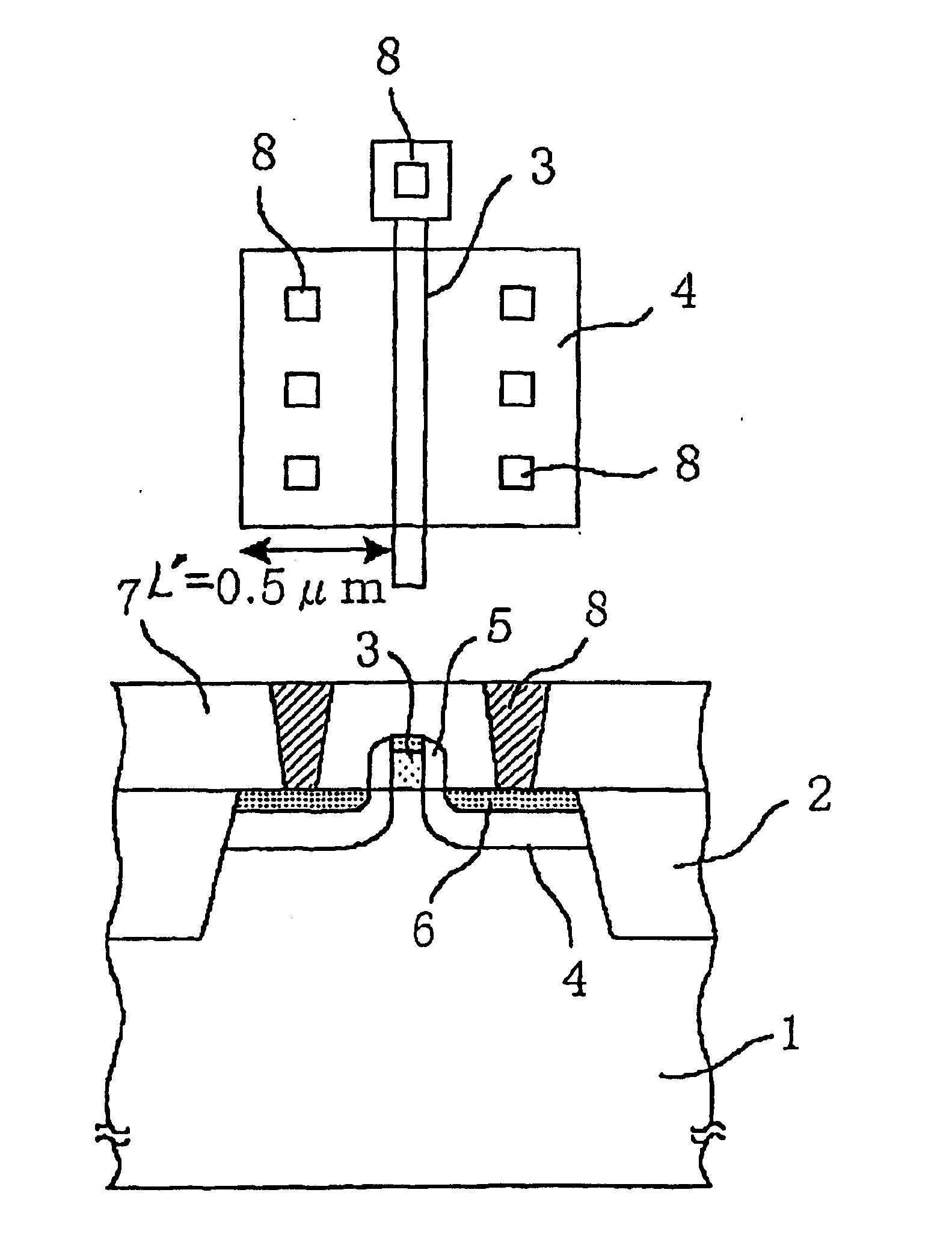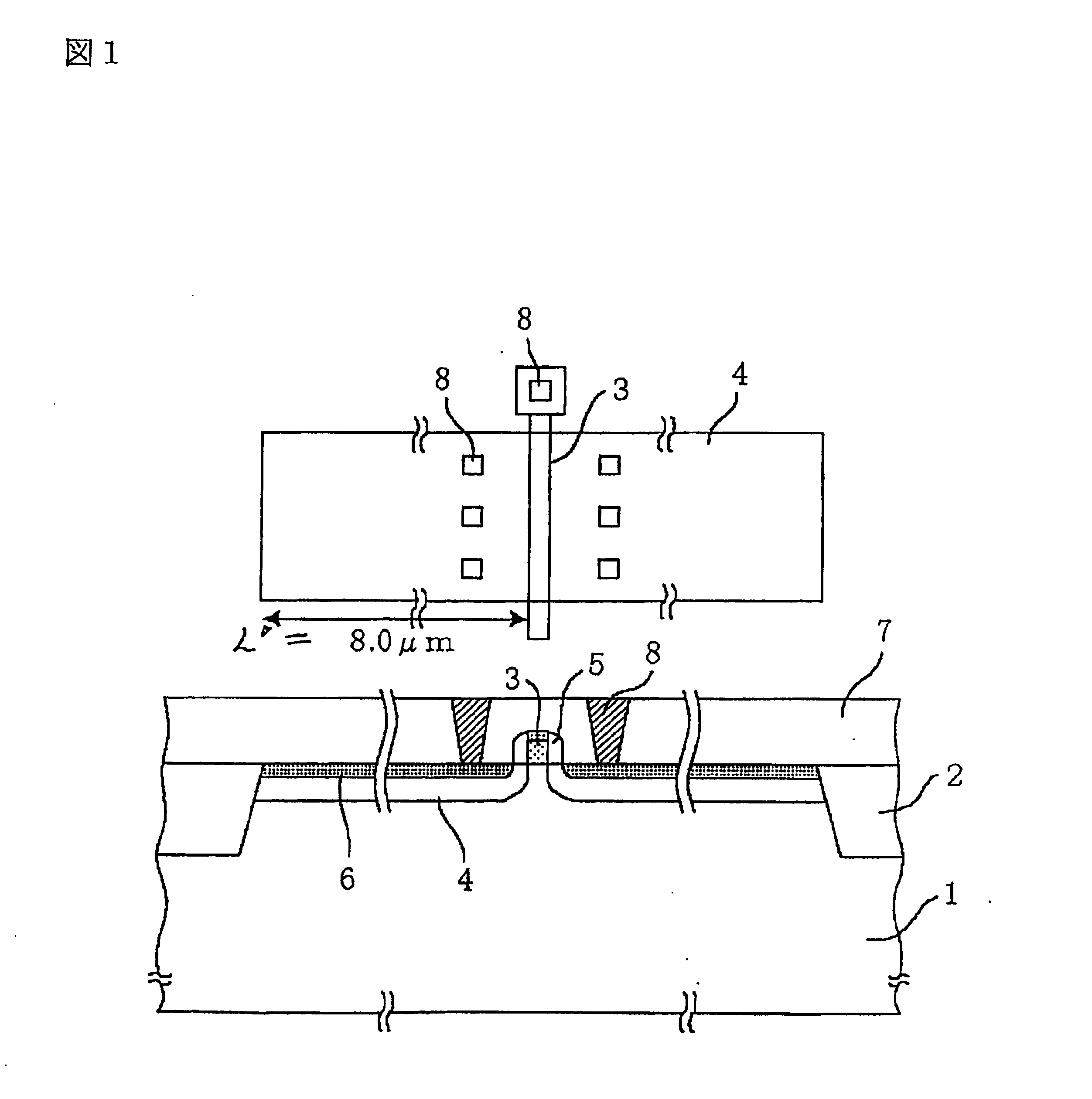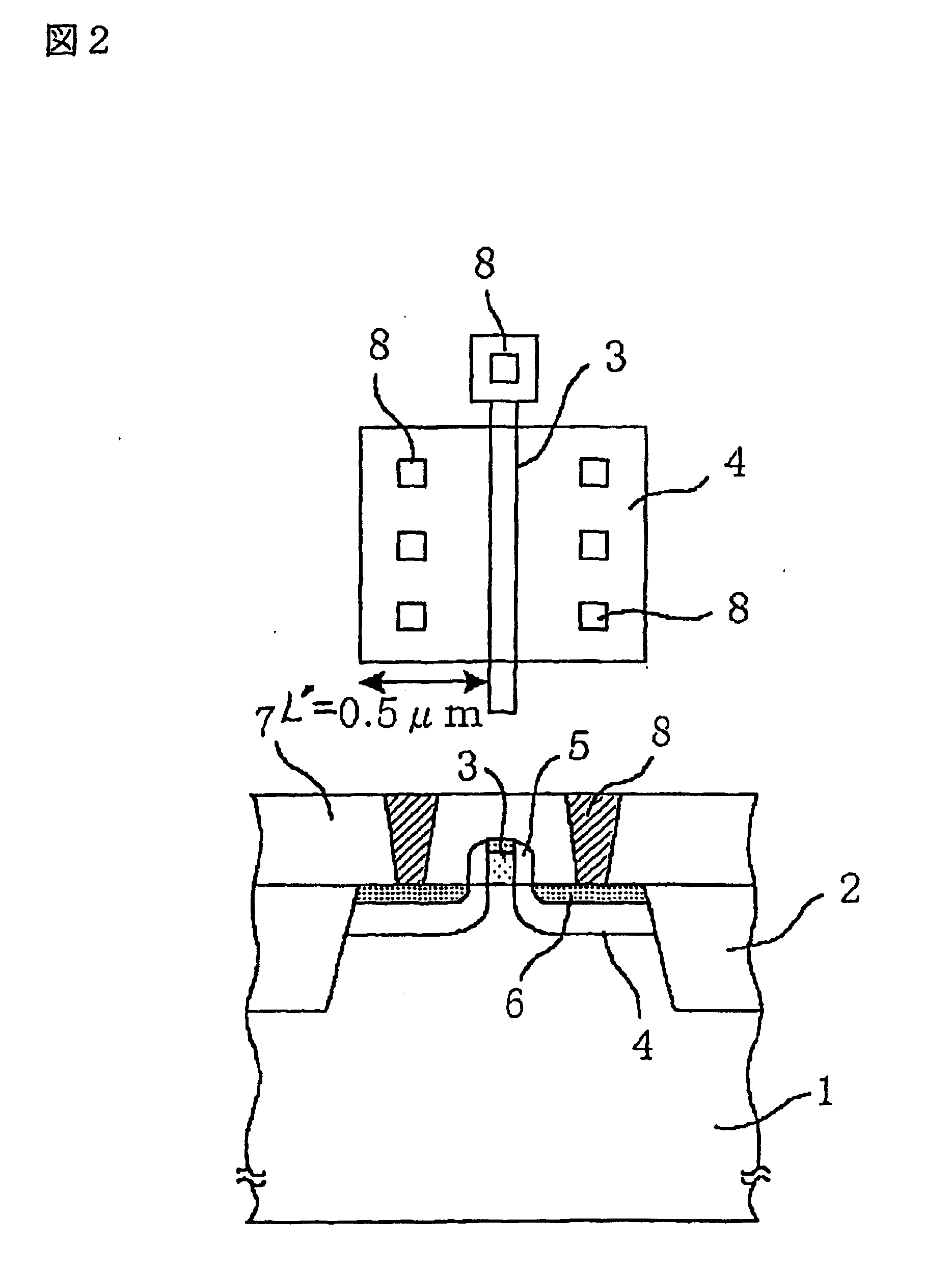Mos semiconductor device
a semiconductor device and semiconductor technology, applied in the direction of semiconductor devices, electrical appliances, transistors, etc., can solve the problems of difficult to obtain a sufficiently high mobility, unsuitable for the case, and inability to achieve the first conventional method
- Summary
- Abstract
- Description
- Claims
- Application Information
AI Technical Summary
Benefits of technology
Problems solved by technology
Method used
Image
Examples
first embodiment
[0031] The present inventors investigated a channel region with a strain introduced by an STI (shallow trench isolation)-type device isolation region as well as an influence of this strain to an ON-current. For this purpose, two p-channel MOS field effect transistors were prepared and measured in lattice strain of channel region and in ON-current, wherein the two p-channel MOS field effect transistors are different in a distance L′ between the device isolation film and the channel or source / drain length as shown in FIGS. 1 and 2. FIG. 1 shows a first p-channel MOS field effect transistor with a long source / drain length. FIG. 2 shows a second p-channel MOS field effect transistor with a short source / drain length.
[0032] As shown in FIG. 1, the first p-channel MOS field effect transistor has the following structure. An active region is isolated by an STI (shallow trench isolation)-type device isolation film 2 over a silicon substrate 1. A gate insulation film (not illustrated) is form...
second embodiment
[0045] In accordance with the above-described first embodiment, the p-channel MOS field effect transistor is improved in ON-current by applying the compressive strain in the channel direction to the p-channel MOS field effect transistor. Application of the compressive strain in the channel direction to the n-channel MOS field effect transistor causes decrease of the ON-current. It is necessary for the n-channel MOS field effect transistor to introduce a tensile strain in the channel direction into the n-channel MOS field effect transistor to improve the ON-current thereof.
[0046] In accordance with this second embodiment, a silicon nitride film is inserted into the STI-type device isolation film to introduce the tensile strain in the channel direction into the n-channel MOS field effect transistor to improve the ON-current thereof. FIG. 6 shows schematically the section of the device isolation film with the inserted silicon nitride film. The STI-type device isolation comprises a sil...
third embodiment
[0054]FIG. 9 is fragmentary plan and sectional views showing a CMOS structure in accordance with the third embodiment of the present invention. in FIG. 9, the same reference numbers are allocated to the same parts as shown in FIGS. 1 and 2. Duplicate descriptions will be omitted. In the third embodiment shown in FIG. 9, a p-well 1a and an n-well 1b are formed over a silicon substrate 1. An n-channel MOS field effect transistor and a p-channel MOS field effect transistor are formed over those wells. As shown in the same drawing, in accordance with this embodiment, the CMOS structure comprises the n-channel MOS field effect transistor with a long source / drain length L′ and the p-channel MOS field effect transistor with a short source / drain length L′. If the source / drain length L′ is short, then the hole mobility is increased, while the electron mobility is decreased. If both the n-channel and p-channel MOS field effect transistors have short source / drain length, then the n-channel MOS...
PUM
 Login to View More
Login to View More Abstract
Description
Claims
Application Information
 Login to View More
Login to View More - R&D
- Intellectual Property
- Life Sciences
- Materials
- Tech Scout
- Unparalleled Data Quality
- Higher Quality Content
- 60% Fewer Hallucinations
Browse by: Latest US Patents, China's latest patents, Technical Efficacy Thesaurus, Application Domain, Technology Topic, Popular Technical Reports.
© 2025 PatSnap. All rights reserved.Legal|Privacy policy|Modern Slavery Act Transparency Statement|Sitemap|About US| Contact US: help@patsnap.com



